
Guide to Iceland’s Wildlife: Fascinating Animals & Where to Find Them
There are many reasons why we travel. Some people try to find places with great archeological sites; others are drawn by the food a particular country has; some may try to find museums and cultural attractions as the main reason to choose a destination; and many want to soak in a natural environment that is unique, different, and nothing like they’ve seen before. And they are all great reasons to choose a destination. Luckily, Iceland offers a lot of them, perhaps all of them combined, but there’s no doubt that nature shines here with a very strong light.
As part of the natural environment, wildlife is one of the primary attractions for many travelers. And, if not the most important, it’s certainly an added value for many tourists who come to this Nordic country.
Certain animals are popular attractions in Iceland, and many people travel here in the hope of seeing, for example, whales or puffins, which are perhaps the two most popular. In this humble guide, we’ve selected the most wanted ones, although there are many more. We will describe the best places to see them as well as places to stay with your camper near those locations.
Key Takeaways
- Many animal species live in Iceland or spend time here as part of their migration.
- The country is especially popular for birdwatching.
- The Arctic fox is the only land mammal native to Iceland.
Animal species in Iceland
Before we get into details, we have focused here on wildlife, not all the animals that live in the country. For instance, the two most common animals in the Icelandic fields are sheep and Icelandic horses. We have not included them here because they are domesticated. Sheep are often seen grazing near roads and occasionally crossing them. And there are many farms and stables all over the country that breed horses and organize guided tours, but they are not on this list.
Having said that, Iceland’s fauna is a unique blend, shaped by its unique location and extreme environment. The Arctic fox is the island’s only native land mammal, and can be seen in different areas in the country, its fur changing colors with the seasons. Reindeer were introduced a few centuries ago and are a common sight in the eastern part of the country. The American mink was also introduced and has thrived in this difficult climate.
However, there are not many more land animals in Iceland, apart from some small rodents like mice. But the skies and seas are full of life here. In fact, Iceland is a great location for birdwatching, and many enthusiasts come to see the different species that live or migrate here. The star is, without a doubt, the puffin, who comes to nest in the summer months along the coast. But there are many other species, such as gyrfalcons, kittiwakes, harlequin ducks, fulmars, razorbills, skuas, common snipes, and many more.
Iceland has also become a prime destination for whale watching. The cold waters of the North Atlantic Ocean host a large variety of these sea giants. There are several places to see them, and there are many companies that operate guided tours on boats to get close to the animals. There are tours even from Reykjavik, but the best places are Húsavík, in North Iceland, and Ólafsvík, on the Snæfellsnes Peninsula.
In this guide, we’ll focus on the species most sought after by travelers—Arctic foxes, reindeer, puffins, whales, seals, and harlequin ducks—sharing where to spot them and the best campsites to make your adventure unforgettable. However, there are many options in each region, so you can also check our campsite guide.
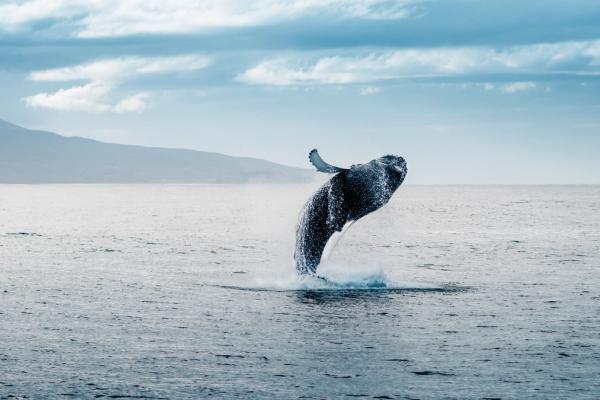
Arctic Fox: The original Icelander
The Arctic fox, as we already mentioned, is Iceland’s sole native land mammal. It’s believed that, in the last Ice Age, when Iceland was connected to some other territories, this animal arrived. This happened long before the first human settlers arrived with other animals, which took place at the end of the 9th Century. This small and resourceful creature learnt to adapt to the island’s harsh landscapes and blend with its surroundings. In fact, its fur changes from white in winter to brown-greyish in the warmer months. This way, it can camouflage itself with the snow, or the tundra and rocky hills, depending on the season.
Arctic foxes are opportunistic feeders, scavenging seabird eggs, fish, or even berries, and their curious nature makes sightings a delight. They are not afraid of humans and some may even get close, but they tend to hide if you get near them. They can be seen all over Iceland, but the Westfjords, particularly the Hornstrandir Nature Reserve, is where they can be found in larger numbers. Here, protected from hunting, foxes often wander close to trails, especially at dawn or dusk.
The Hornstrandir Nature Reserve is quite remote, and there’s no way to get there in a campervan or a car. You can only go there by boat, mainly from Ísafjörður, the capital of the region. If not, you still have good chances of seeing them in other parts of the Westfjords.
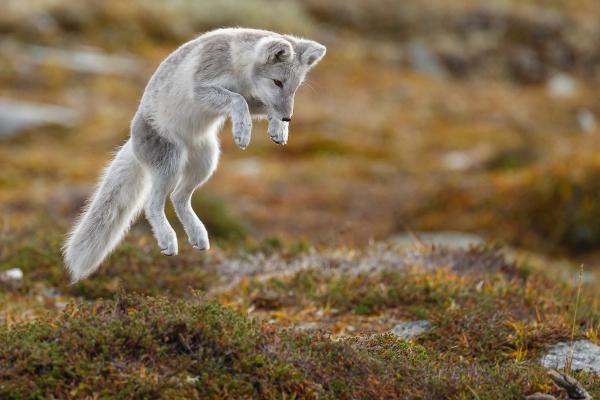
Where to Stay
Tungúskógur Camping Ground
Location: Near Ísafjörður, Westfjords. Open: May to September.
This campsite is just outside Ísafjörður, the capital of the Westfjords. From there you can take a boat to the Hornstrandir Nature Reserve. It’s one of the most complete camping sites in the region, with toilets, showers, electricity, kitchen, washing machine and dryer, and a playground for children. It’s also close to the town’s center, so you have access to shops and restaurants. On top of that, the Arctic Fox Center is in Súðavík, less than 20 minutes away by car.

Heydalur
Location: Heydalur Valley, Westfjords. Open: June to October.
Heydalur is a rural hotel with a camping site, and one of the best options for a campervan stay in the region. It’s a mix of cottages, private rooms, and a camping area. This campsite offers a rustic yet cozy experience, with natural hot tubs fed by geothermal springs. They have pitches for campervans and tents, but you can also rent a room, a studio, or a cottage if you prefer a more comfortable stay. There’s even a restaurant where you can taste some local food.
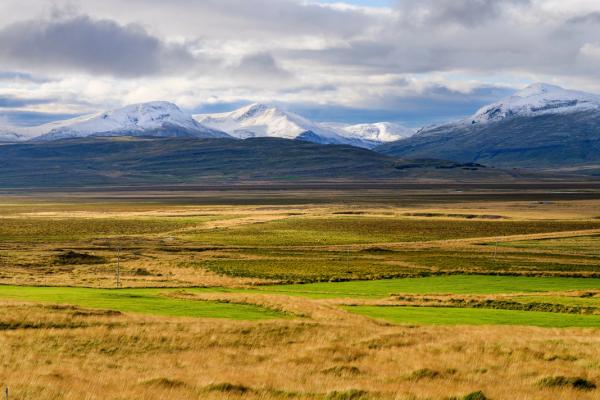
Reindeer: Graceful Roamers of the East
Introduced from Norway in the 1700s, reindeer have made Iceland’s Eastfjords their home, roaming wild in a landscape of mountains and valleys. Even though they were originally domesticated when they arrived in the country, they now graze freely, moving to highland areas in summer and coastal lowlands in winter. It’s estimated that the total population of reindeer in Iceland is between 6,000 and 7,000. Winter drives along the Ring Road, especially between Djúpivogur and Hof, offer better chances to see herds, but they are shy in nature, so you’ll need to be patient.
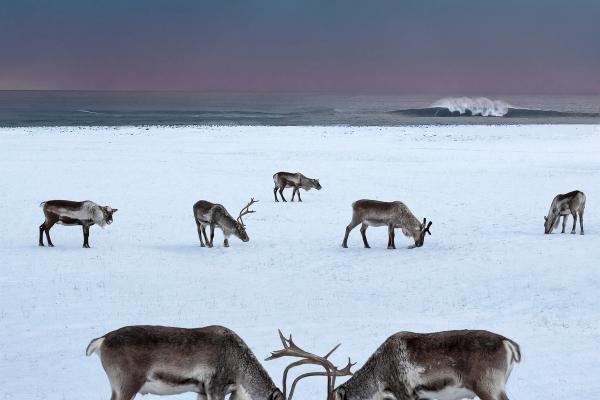
Where to Stay
Egilsstaðir Camping Site
Location: Egilsstaðir, Eastfjords. Open: All year.
Egilsstaðir is one of the most important cities in East Iceland, and it has its own camping ground. It has great facilities, with toilets, showers, a shared kitchen, a laundry room with a washing machine and dryer, Wi-Fi, and a playground for children. The proximity to the town’s center means you are just a short walk away from shops, restaurants, and other services.
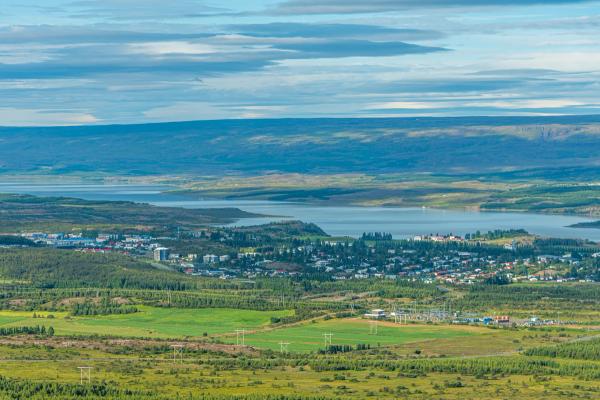
Reyðarfjörður Camping Site
Location: Reyðarfjörður, Eastfjords. Open: May to September.
This campground is located next to a pond, in the middle of a beautiful valley surrounded by mountains. It has basic but clean facilities, including toilets, showers, and a shared kitchen. It has grassy pitches that suit tents and small campers, with fjord and mountain views. There are plenty of services in town, all within a 10-minute walk.
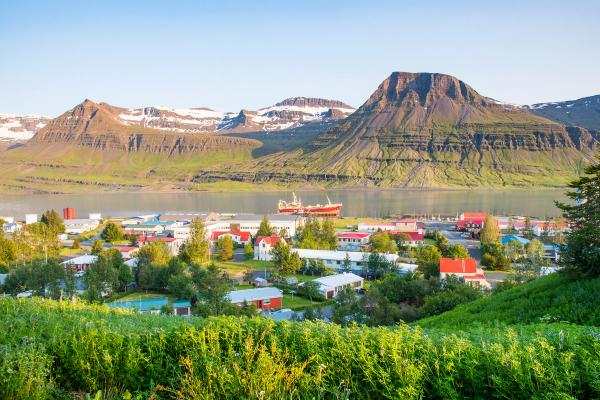
Puffins: Iceland's Most Iconic Bird
If there’s an animal that represents the best of Iceland, that’s the Atlantic puffin. This funny-looking bird, with its colorful beak and comic way of walking, comes to Iceland to nest in the summer months, from April to September. During that time, this island becomes the largest colony of puffins in the entire planet, hosting around 60% of the world’s population. In spite of their appearance, they are skillful flyers and dive fearlessly into the sea to catch fish.
They can be spotted in many coastal areas throughout Iceland, but the South Coast, particularly Dyrhólaey and the Westman Islands, offers the best viewing opportunities, with colonies accessible by foot or boat. Látrabjarg in the Westfjords and Hafnarhólmi in the east are also hotspots, but the south would give you better chances.
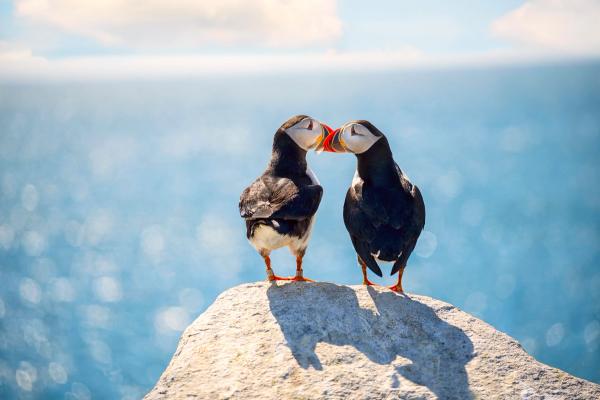
Where to Stay
Vík Camping Ground
Location: Vík í Mýrdal, South Coast. Open: May to October.
Just minutes from Dyrhólaey’s puffin colonies, Vík is one of the most important towns along the Ring Road in South Iceland. It’s also next to Reynisfjara, one of the most beautiful black sand beaches in Iceland. There’s a campsite in the town, with grassy pitches for tents and campers, clean toilets, hot showers, and a communal kitchen. The nearby village has dining and shops.
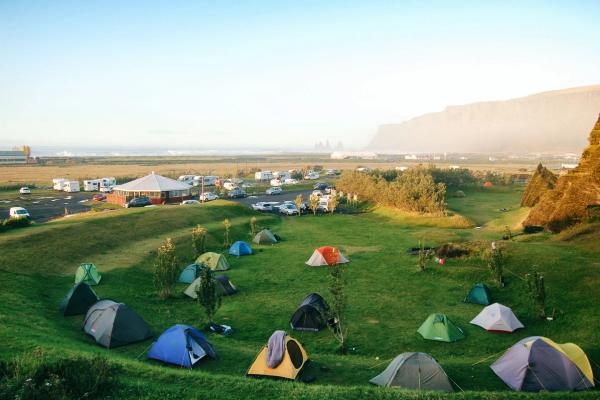
Skógar Camping Ground
Location: Skógar, South Iceland. Open: All year.
This camping ground is in a beautiful rural setting, just by Skógafoss, one of the most spectacular waterfalls in Iceland. It’s not far from Dyrhólaey and also close to the ferry to the Westman Islands, perfect for a day trip to the archipelago to see puffins. It has well-kept pitches for tents and RVs, modern restrooms, hot showers, and a cooking area. It’s a good idea to book early for summer stays.

Whales: The Gentle Giants of the Sea
The seas around Iceland receive Arctic and Atlantic currents, which have made the island a haven for more than 20 whale species. This makes it the best country in Europe to see these huge mammals. Humpback whales, known for their spectacular breaches, and minke whales are frequent sights, with orcas and rare blue whales occasionally appearing. Summer is the best time to see them.
Húsavík, on the North Coast, is the go-to spot, with a 95% sighting success rate in Skjálfandi Bay from June to August. There are several companies that offer boat tours from the town’s harbor. Another great option is the Snæfellsnes Peninsula, particularly Ólafsvík.
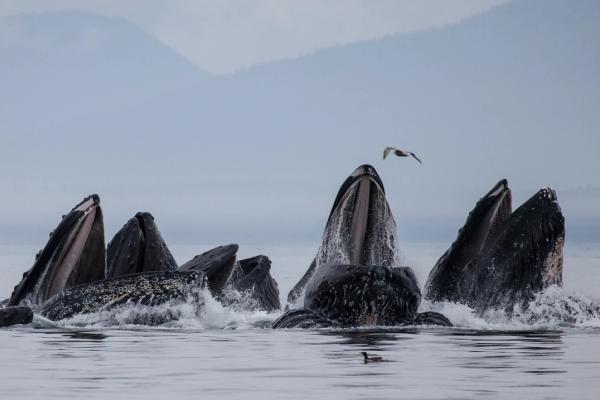
Where to Stay
Húsavík Camping Ground
Location: Húsavík, North Iceland. Open: May to September.
This campsite has everything necessary for a campervan stay, including pitches for tents and campervans, toilets, showers, a washing machine and dryer, a communal kitchen, and a playground for children. There’s a disc-golf course just outside the camping ground.
It’s also quite close to the GeoSea Thermal Baths, an excellent option for discovering Iceland's bathing culture. Don’t miss the opportunity to walk to one of the town’s restaurants and try some seafood or lamb.
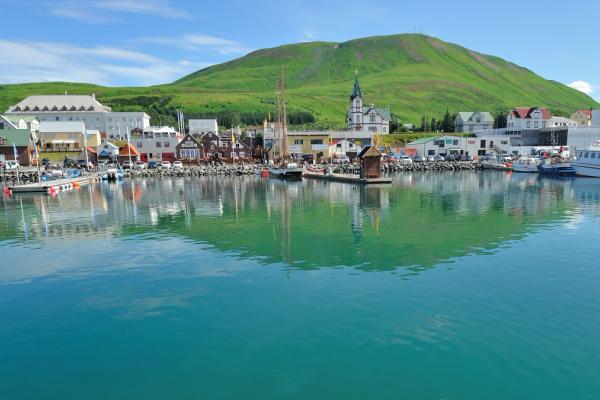
Ólafsvík Camping Ground
Location: Ólafsvík, Snæfellsnes Peninsula. Open: April to September.
In West Iceland, we can find the Snæfellsnes Peninsula, one of the most diverse regions in the country. Ólafsvík, on its north shore, is a great location for whale watching. It has cozy pitches for tents and small campers, clean restrooms, hot showers, and a communal kitchen.
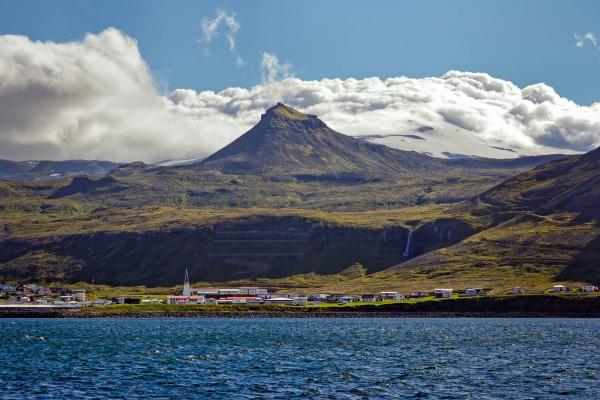
Seals: Playful Guardians of the Coast
Apart from whales, there’s another marine animal that attracts visitors to Iceland. There are several places along the country’s coastline where these playful animals can be spotted.
Harbor seals, with their round faces and sleek bodies, are the most common, often seen lounging on rocks or swimming playfully. But not only them. It’s not rare to also see grey seals, a bit larger, but with less frequent sightings. Ytri Tunga Beach, on the Snæfellsnes Peninsula, is a top spot. It’s one of the few golden sand beaches in Iceland, and seals are often spotted there.
Another fantastic location is the Vatnsnes Peninsula in North Iceland, which offers reliable sightings at sites like Illugastaðir and Svalbarð, where colonies gather to sunbathe. Try to visit at low tide to maximize your chances, and keep a respectful 50-meter distance to avoid disturbing these marine mammals.

Where to Stay
Snorrastaðir Farm Holidays
Location: Near Ytri Tunga Beach, West Iceland. Open: All year.
Just a short drive from Ytri Tunga’s seal colony, this traditional farm has been operated by the same family since 1883. It has a camping area and several cabins for up to five people. The camping area has pitches for tents and campers, clean toilets, hot showers, and a communal kitchen. The farm also offers guesthouse rooms and horseback riding adventures.

Kirkjuhvammur Camping Ground
Location: Hvammstangi, Vatnsnes Peninsula. Open: May to October.
A few kilometers south of Illugastaðir, in the Vatnsnes Peninsula, we can find Hvammstangi, home of the Kirkjuhvammur Camping Ground. It has pitches for campervans and tents, toilets, showers, a washing machine, and a shared kitchen. The town’s shops and cafes are within walking distance. You can take the opportunity to visit Hvitserkur, one of the most striking natural monuments in North Iceland.
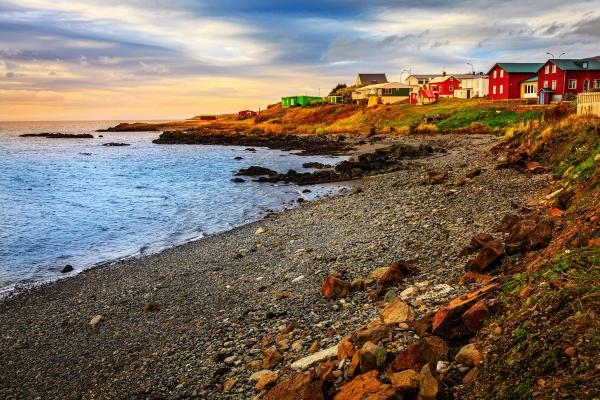
Harlequin Duck: A Colorful Sight
The list of amazing birds present in Iceland is almost endless. There are some species, such as the tufted duck, the common snipe, or the razorbill, that many nature lovers would love to see here. We have picked the harlequin duck, though, because of its unique beauty. With its dazzling blue, white, and chestnut feathers, it’s a standout in Iceland’s birdlife. They can usually be found swimming in rivers or in low wetlands, eating insects, or diving for fish.
There are two areas where they are easy to spot. One is the clear streams on the Snæfellsnes Peninsula. The other is Lake Mývatn, home to a good number of other duck species. They nest between May and July, and it’s easiest to see them during this time.
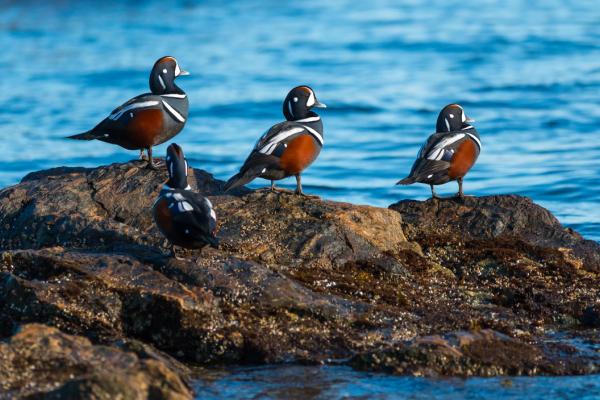
Where to Stay
Arnarstapi Campsite
Location: Arnarstapi, Snæfellsnes Peninsula. Open: May to September.
The charming town of Arnarstapi, on the south shore of the Snæfellsnes Peninsula, is a great location to use as a base to explore the region. The town has a campground with showers, toilets, Wi-Fi, electricity hookups, and a sink for washing dishes. There is also a shop, a gas station, and a restaurant in Arnarstapi, all within walking distance.
The campsite also has 13 cottages with Wi-Fi that can be rented. This campsite is fairly close to Ytri-Tunga Beach, one of the prime spots to see seals.

Vogar Campground
Location: Near Lake Mývatn, North Iceland. Open: All year.
Located a couple of minutes away on foot from the shores of Lake Mývatn, this site is perfect for spotting harlequin ducks and other waterfowl. It offers pitches for tents and campervans, clean restrooms, hot showers, a communal kitchen, and an indoor dining area. It’s not possible to book in advance; it works on a first-come, first-served basis. They also have a guesthouse and a nice pizzeria!
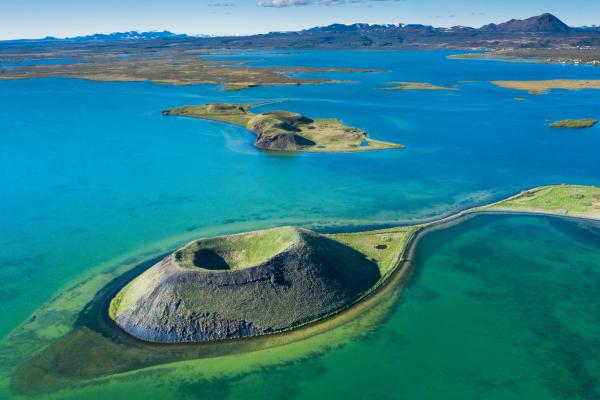
Travel Tips
- Timing is Key: Visit from May to September for puffins and whales, or winter for better chances to spot reindeer and Arctic foxes. Check seasonal patterns for each species to plan your trip.
- Choose Eco-Friendly Tours: If you’re considering hiring a guided tour to observe wildlife, opt for one that has certification to support sustainable wildlife viewing practices. Some companies offer great tours with minimal impact on the animals' habitats.
- Respect Wildlife: Keep a safe distance from animals to avoid stress. Use binoculars for close-up views, especially for nesting birds and foxes.
- Pack Smart: Iceland’s weather can shift quickly and is quite unpredictable. Dress in layers and use waterproof material for the outer layer, even in summer.
- Protect the Environment: Nature in Iceland is gorgeous but also fragile. It’s everyone’s duty to keep it that way, so don’t leave marked paths to preserve Iceland’s fragile ecosystems, especially in breeding areas.
- Choose the Right Vehicle: When choosing your campervan, choose one that fits your travel plans. Select a 4x4 camper if you’re going to remote areas or are coming in winter.
- Bring Binoculars: This way, you can get quite close to the action without disturbing the animals.
Conclusion
Iceland’s wildlife, from the cute Arctic fox to the graceful humpback whale, is as varied and spectacular as its landscapes. The chance to see some beautiful and, sometimes, unique animals, in such a natural setting is an experience that everyone should enjoy, at least, one in their lifetime. The island offers countless opportunities to discover a lesser-known aspect of this country, leaving a fond memory forever.
